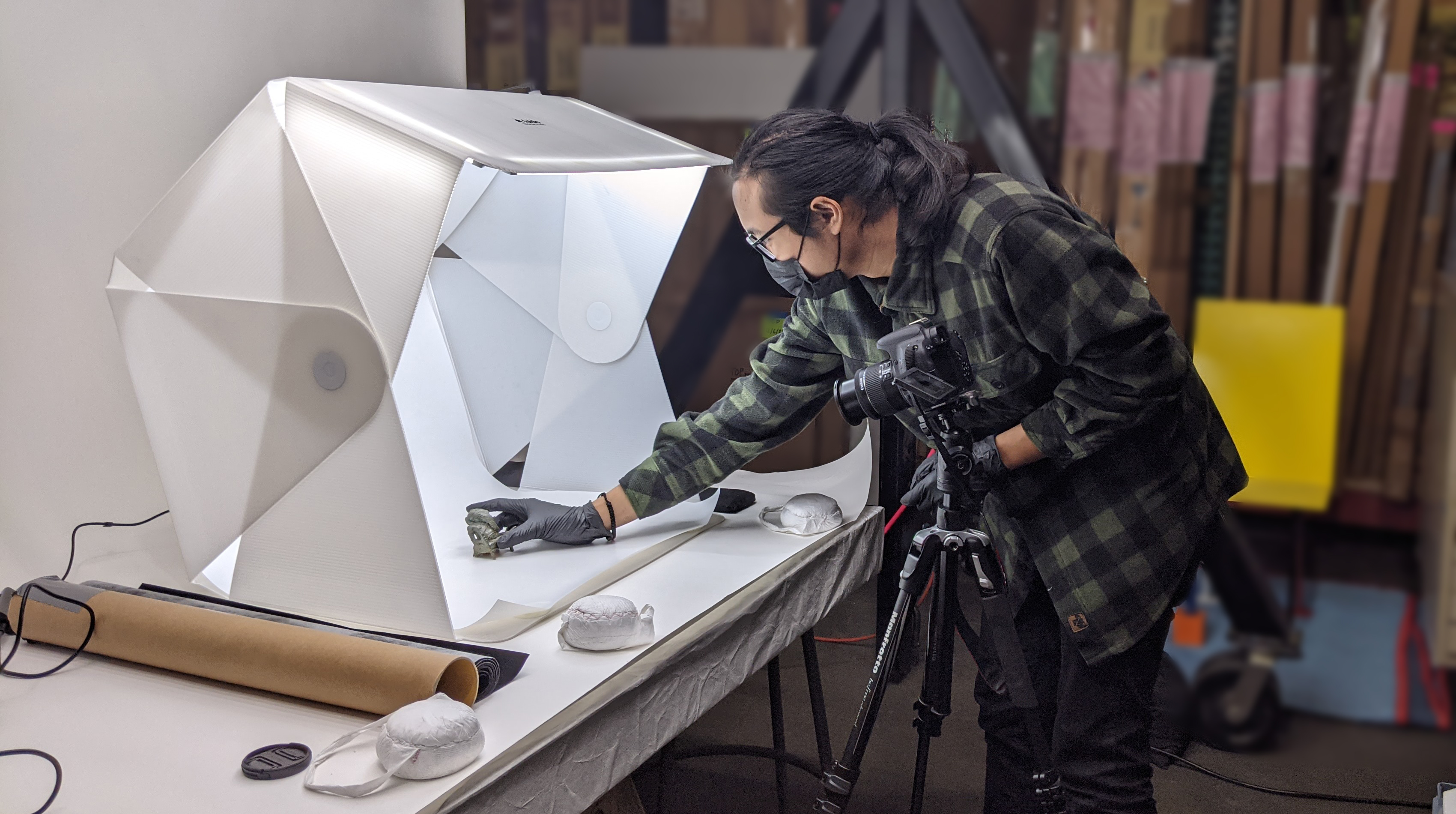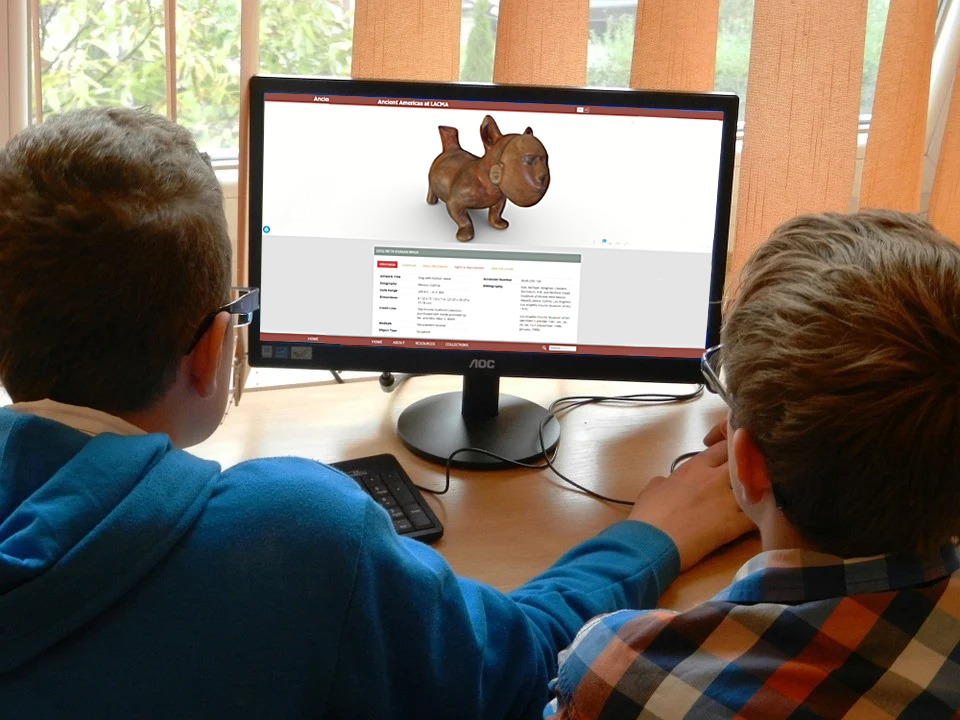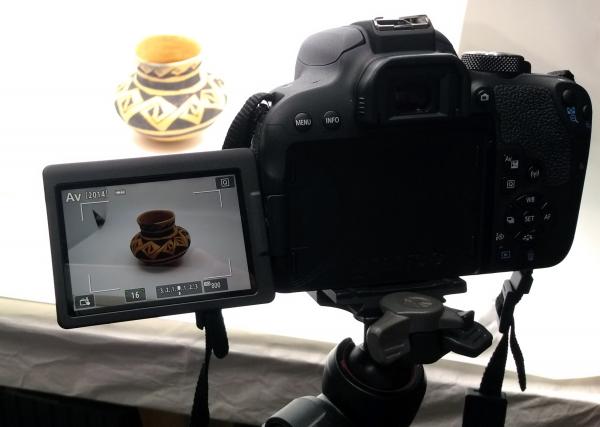The first cohort of CSUDH-LACMA Visiting Scholars completed their coursework and hands-on training in Fall 2021. Alongside their collections management and curatorial training, Visiting Scholars developed research projects inspired by materials in LACMA’s collections, and a number of these projects are being presented here on Unframed.
As part of LACMA’s fall 2021 CSUDH-LACMA Visiting Scholars Program, three fellow CSUDH Anthropology students and I had the opportunity to work with Collections Management and Curatorial staff at one of LACMA’s offsite storage facilities. Our goal was to learn about collections management and participate in the curation of artwork from their Art of the Ancient Americas collection. Over several weeks, we learned about art handling, environmental monitoring including pest management, art rehousing, accessioning and staging, computer-based collections management systems, assessing authenticity, collecting ethics, rehousing acquisitions, and my personal favorite—photogrammetry.
During our fourth week of training, we were introduced to Dr. Alyce de Carteret, Postdoctoral Fellow in Art of the Ancient Americas at LACMA. Dr. de Carteret taught us about photogrammetry—not just the technical end of it, but the ways in which it can be applied in a museum setting. From protecting original artworks and supplementing education to improving accessibility and advancing research opportunities, photogrammetry helps LACMA fulfill its mission to serve the public and its wide range of audiences.
What Is Photogrammetry?
In its most basic sense, photogrammetry is the process of taking two-dimensional photographs of a single object from multiple angles and processing them into a three-dimensional digital model.
![Codex-Style Vase with “Snake Lady” Scene [#1] , original (left) and 3D model (right), Southern Campeche or Northern Petén, Maya, 650–800 CE, Los Angeles County Museum of Art, Art of the Ancient Americas Collection](https://unframed.lacma.org/sites/default/files/attachments/Snake%20Lady.jpg)
Early in my undergraduate career, I learned about photogrammetry and its use in the field of archaeology, my chosen major. While detailed drawings and traditional photography have long been the go-to methods for documenting archaeological sites and objects, photogrammetry and other methods of 3D modeling allow archaeologists to gather more precise contextual information. With a digital camera and modeling software, just about anyone can stitch together hundreds of overlapping high-resolution images of an object, feature, or site to create a highly accurate 3D model (as in the image above).
As part of our training with LACMA, we had the opportunity to select artworks from the AoAA collection to photograph in preparation for 3D modeling. I chose an Ancestral Puebloan (Jeddito) black-on-yellow geometric jar (top image) for its beautiful shape and colorful decoration. First, we set up a photo booth to provide a smooth and uncluttered background and illuminated the artwork in such a way as to avoid casting shadows. Next, we situated the digital camera on a tripod and placed the artwork on a small turntable that rotates a programmed number of degrees for each photograph taken. The camera’s shutter is triggered by an infrared beam that emanates from the turntable after each incremental rotation. Once everything was set, all we had to do was activate the turntable, watch it communicate with the camera, and wait. After one or two minutes, we had a series of 30 photographs documenting the full circumference of the artwork. We then repeated the steps from two more angles to ensure that the entire surface was captured. In the end, we had 90 photographs that could then be stitched together with 3D-modeling software.

Why Is Photogrammetry Important?
LACMA’s Art of the Ancient Americas collection includes delicately painted and decorated ceramic sculptures and vessels from West Mexico, northern Mexico, and the southwestern United States. The goal of curating is to preserve works of art for as long as possible. However, despite the best curatorial practices, precious objects will degrade over time. Therefore, the less they are handled, the better. This is where photogrammetry comes in. Once digitized, works of art can be viewed, studied, and shared online without ever being handled.
In addition, while only a handful of artifacts can be on display in a museum at one time, entire collections can be available digitally for continued education and research. Photogrammetry allows students to explore an object in ways that simply cannot be done with the original.

First-hand observation will always be at the heart of the museum experience. However, to better preserve artifacts for future generations and provide access for as many people as possible, photogrammetry and other forms of 3D modeling have become an essential part of museum operations. Photogrammetry is the future of open access to museum collections, and LACMA’s adoption of this technology will not only enrich museum-going experiences but will aid in the preservation and conservation of their collections.
I would like to thank all the Curatorial and Collections Management staff at LACMA who helped to make our training as Visiting Scholars an unforgettable experience. If you are curious like me, you can learn more about artwork from the Art of the Ancient Americas collection online and view 3D models of some of its most interesting pieces.



